-
 Bitcoin
Bitcoin $108,996.1967
2.65% -
 Ethereum
Ethereum $2,568.0446
5.65% -
 Tether USDt
Tether USDt $1.0004
0.02% -
 XRP
XRP $2.2532
3.07% -
 BNB
BNB $659.8395
1.51% -
 Solana
Solana $153.8915
3.45% -
 USDC
USDC $0.9999
-0.02% -
 TRON
TRON $0.2839
0.92% -
 Dogecoin
Dogecoin $0.1696
6.19% -
 Cardano
Cardano $0.5894
6.83% -
 Hyperliquid
Hyperliquid $39.8845
6.55% -
 Sui
Sui $2.8870
7.43% -
 Bitcoin Cash
Bitcoin Cash $501.4074
-0.52% -
 Chainlink
Chainlink $13.5237
4.68% -
 UNUS SED LEO
UNUS SED LEO $9.0168
0.76% -
 Avalanche
Avalanche $18.6548
7.56% -
 Stellar
Stellar $0.2405
4.66% -
 Toncoin
Toncoin $2.8775
3.34% -
 Shiba Inu
Shiba Inu $0.0...01189
4.74% -
 Litecoin
Litecoin $88.6280
5.55% -
 Hedera
Hedera $0.1560
7.09% -
 Monero
Monero $322.9053
2.78% -
 Polkadot
Polkadot $3.5526
7.23% -
 Bitget Token
Bitget Token $4.5886
2.35% -
 Dai
Dai $1.0000
0.00% -
 Ethena USDe
Ethena USDe $1.0001
0.00% -
 Uniswap
Uniswap $7.3492
12.17% -
 Pepe
Pepe $0.0...01023
9.43% -
 Aave
Aave $274.8468
5.51% -
 Pi
Pi $0.4933
1.06%
Best practices for withdrawing Bitcoin from OKX to Gate.io
To withdraw Bitcoin from OKX to Gate.io, verify your identity on both platforms, understand fees and limits, enable 2FA, and monitor the transaction closely for a secure transfer.
Apr 07, 2025 at 07:29 am
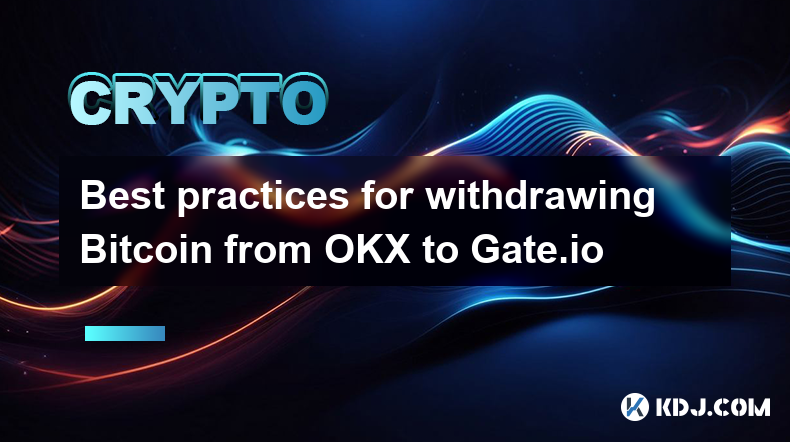
Withdrawing Bitcoin from OKX to Gate.io is a process that requires attention to detail and adherence to best practices to ensure a smooth and secure transfer. This article will guide you through the steps and provide essential tips to help you manage your Bitcoin transfers effectively. From setting up your accounts to understanding the fees and security measures, we'll cover everything you need to know to make your withdrawals successful.
Preparing Your Accounts
Before you can withdraw Bitcoin from OKX to Gate.io, you need to ensure that both accounts are properly set up and verified. Start by verifying your identity on both platforms, as this is a prerequisite for making withdrawals. On OKX, go to the "Account" section and complete the KYC (Know Your Customer) process. Similarly, on Gate.io, navigate to the "User Center" and follow the verification steps. Make sure your email addresses and phone numbers are verified on both platforms to receive important notifications.
Understanding Withdrawal Fees and Limits
Each cryptocurrency exchange has its own fee structure and withdrawal limits, which can impact your transaction. On OKX, the Bitcoin withdrawal fee is typically around 0.0005 BTC, but this can vary. Gate.io's Bitcoin withdrawal fee is usually around 0.001 BTC. It's crucial to check these fees before initiating a transfer, as they can affect the amount of Bitcoin you receive. Additionally, both platforms have daily and monthly withdrawal limits. For OKX, the daily limit might be around 100 BTC, while Gate.io's limit could be around 20 BTC per day. Always review these limits to plan your withdrawals accordingly.
Securing Your Accounts
Security is paramount when dealing with cryptocurrency transactions. To protect your accounts, enable two-factor authentication (2FA) on both OKX and Gate.io. This adds an extra layer of security by requiring a code from your mobile device to log in or authorize transactions. Additionally, use strong, unique passwords for each platform and consider using a password manager. Be wary of phishing attempts and never share your private keys or recovery phrases with anyone. Regularly monitor your account activity and set up alerts for any unusual transactions.
Initiating the Withdrawal on OKX
To withdraw Bitcoin from OKX to Gate.io, follow these steps:
- Log into your OKX account and navigate to the "Funds" section.
- Click on "Withdraw" and select Bitcoin (BTC) from the list of available cryptocurrencies.
- Enter the amount of Bitcoin you wish to withdraw, keeping in mind the fees and limits.
- You will need to provide the Gate.io Bitcoin deposit address. To get this, log into your Gate.io account, go to the "Wallet" section, and click on "Deposit." Select Bitcoin and copy the deposit address.
- Paste the Gate.io Bitcoin deposit address into the withdrawal form on OKX.
- Review all the details carefully, including the amount, address, and fees. Once you are satisfied, click "Submit" to initiate the withdrawal.
Monitoring the Transaction
After initiating the withdrawal, it's important to monitor the transaction to ensure it goes through smoothly. On OKX, you can check the status of your withdrawal in the "Transaction History" section. The transaction will typically take between 10 minutes to an hour to be confirmed on the Bitcoin blockchain, depending on network congestion. Once the transaction is confirmed, you should see the Bitcoin credited to your Gate.io account. If you encounter any issues, such as delays or errors, contact OKX customer support immediately for assistance.
Verifying the Deposit on Gate.io
Once the Bitcoin arrives in your Gate.io account, verify the deposit to ensure everything is correct. Go to the "Wallet" section on Gate.io and check the "Transaction History" to confirm that the Bitcoin has been credited. The amount should match what you withdrew from OKX, minus the withdrawal fee. If there are any discrepancies, contact Gate.io customer support for resolution. It's also a good practice to keep records of all your transactions, including dates, amounts, and fees, for future reference.
Best Practices for Managing Your Bitcoin
Managing your Bitcoin effectively involves more than just transferring it between exchanges. Here are some best practices to consider:
- Diversify Your Holdings: Don't keep all your Bitcoin on one exchange. Consider using multiple exchanges and a hardware wallet for added security.
- Stay Informed: Keep up with the latest news and developments in the cryptocurrency space. This can help you make informed decisions about when to move your Bitcoin.
- Use Cold Storage: For long-term storage, consider using a hardware wallet like Ledger or Trezor. These devices keep your private keys offline, reducing the risk of hacking.
- Regularly Review Your Security: Periodically review your security measures, including your 2FA settings and password strength. Update them as needed to maintain a high level of security.
Common Questions and Answers
Q: How long does it take to withdraw Bitcoin from OKX to Gate.io?
A: The withdrawal process typically takes between 10 minutes to an hour, depending on the Bitcoin network's congestion. Once the transaction is confirmed on the blockchain, the Bitcoin should appear in your Gate.io account.
Q: What are the withdrawal fees for Bitcoin on OKX and Gate.io?
A: On OKX, the Bitcoin withdrawal fee is around 0.0005 BTC, while on Gate.io, it is around 0.001 BTC. These fees can vary, so it's important to check the current rates before initiating a transfer.
Q: How can I ensure the security of my Bitcoin during the transfer?
A: To ensure the security of your Bitcoin, enable 2FA on both OKX and Gate.io, use strong and unique passwords, and be vigilant against phishing attempts. Monitor your transaction closely and keep your private keys and recovery phrases secure.
Q: What should I do if my Bitcoin withdrawal is delayed or fails?
A: If your withdrawal is delayed or fails, check the transaction status on OKX. If there are issues, contact OKX customer support for assistance. Keep records of your transactions and any communication with support for reference.
Q: Can I withdraw Bitcoin from OKX to Gate.io without verifying my identity?
A: No, both OKX and Gate.io require identity verification (KYC) before you can make withdrawals. Complete the KYC process on both platforms to ensure you can transfer your Bitcoin.
Q: What are the daily withdrawal limits for Bitcoin on OKX and Gate.io?
A: On OKX, the daily withdrawal limit for Bitcoin is typically around 100 BTC, while on Gate.io, it is around 20 BTC per day. These limits can vary, so always check the current limits before planning your withdrawals.
Q: How can I keep track of my Bitcoin transactions between exchanges?
A: Keep detailed records of your transactions, including dates, amounts, and fees. Use the transaction history sections on both OKX and Gate.io to monitor your transfers. Consider using a cryptocurrency portfolio tracker for a comprehensive overview of your holdings.
Q: What are the benefits of using a hardware wallet for storing Bitcoin?
A: Hardware wallets like Ledger or Trezor keep your private keys offline, significantly reducing the risk of hacking. They are ideal for long-term storage and provide an additional layer of security for your Bitcoin.
Q: How often should I review my security measures for my cryptocurrency accounts?
A: It's a good practice to review your security measures, including 2FA settings and password strength, at least once every three months. Update them as needed to maintain a high level of security.
Q: What should I do if I notice unauthorized transactions on my account?
A: If you notice unauthorized transactions, immediately secure your account by changing your password and enabling 2FA if not already done. Contact the exchange's customer support for assistance and report the issue. Keep detailed records of the unauthorized transactions for potential recovery efforts.
Disclaimer:info@kdj.com
The information provided is not trading advice. kdj.com does not assume any responsibility for any investments made based on the information provided in this article. Cryptocurrencies are highly volatile and it is highly recommended that you invest with caution after thorough research!
If you believe that the content used on this website infringes your copyright, please contact us immediately (info@kdj.com) and we will delete it promptly.
- Meme Coin Mania: Is BTC Bull the Next Big Thing in a Limited Time BTC Bull Run?
- 2025-07-03 12:30:11
- Bitcoin Soars to $109,000: What's Fueling the Crypto Rally?
- 2025-07-03 10:30:13
- Splatterhouse Rocks Retro Scene: A UK Magazine Deep Dive
- 2025-07-03 12:30:11
- Bitcoin, the Senate Bill, and $107K: A Wild Ride on Capitol Hill
- 2025-07-03 12:50:11
- Chainlink's Chart Patterns Hint at a Big Move: Decoding the LINK Price
- 2025-07-03 10:50:12
- Shiba Inu, Solana Uptrend, Bitcoin Breakout: Decoding the Crypto Buzz
- 2025-07-03 10:50:12
Related knowledge
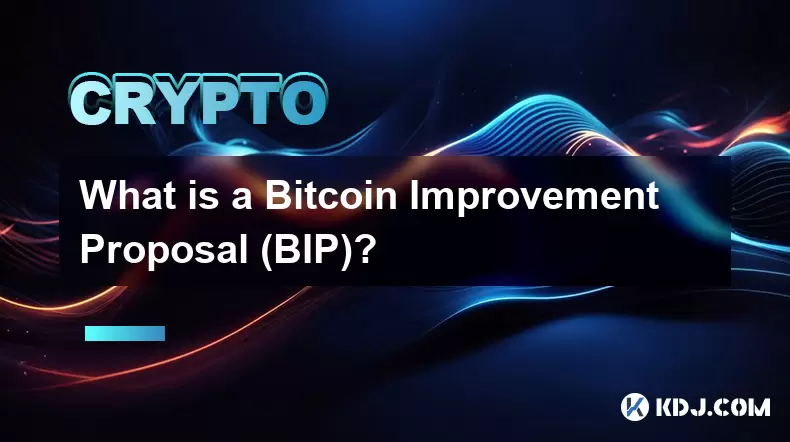
What is a Bitcoin Improvement Proposal (BIP)?
Jul 03,2025 at 11:28am
Understanding the Basics of Bitcoin Improvement Proposals (BIPs)A Bitcoin Improvement Proposal (BIP) is a formal document used to suggest changes, enhancements, or modifications to the Bitcoin protocol. These proposals serve as the primary mechanism through which developers and contributors communicate new ideas for improving the functionality, security...

How to earn interest on my Bitcoin?
Jul 03,2025 at 10:49am
Understanding Bitcoin Interest and Its MechanismsEarning interest on your Bitcoin involves leveraging financial tools or platforms that allow you to lend, stake, or deposit your BTC in exchange for regular returns. Unlike traditional banking where fiat currencies earn interest through savings accounts, Bitcoin’s decentralized nature requires alternative...
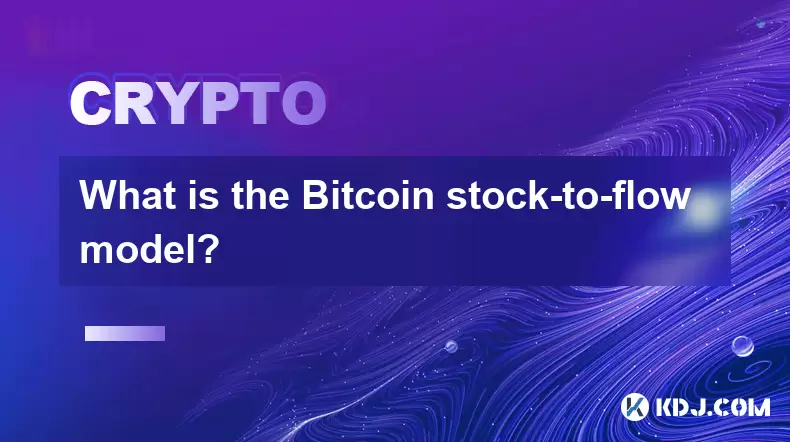
What is the Bitcoin stock-to-flow model?
Jul 03,2025 at 07:49am
Understanding the Bitcoin Stock-to-Flow ModelThe Bitcoin stock-to-flow (S2F) model is a valuation framework that attempts to predict the future price of Bitcoin based on its scarcity. This model, popularized by an anonymous analyst known as PlanB, uses the concept of scarcity from traditional commodities like gold and applies it to Bitcoin. The central ...
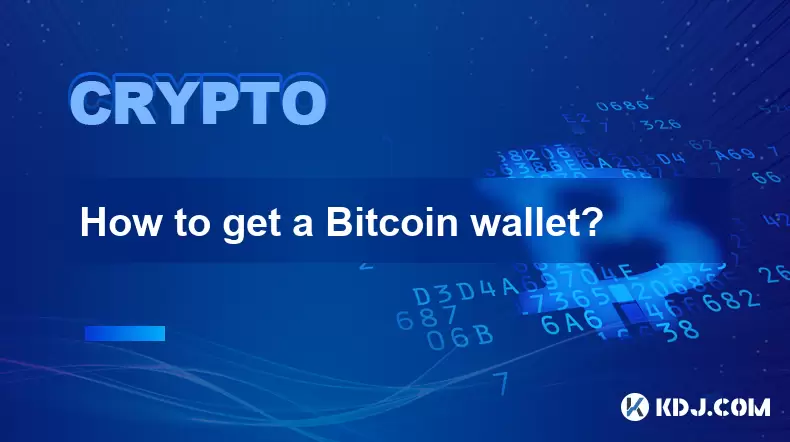
How to get a Bitcoin wallet?
Jul 03,2025 at 10:56am
What Is a Bitcoin Wallet and Why You Need OneA Bitcoin wallet is a digital tool that allows users to store, send, and receive Bitcoin (BTC). Unlike traditional wallets that hold physical currency, a Bitcoin wallet doesn’t actually store the cryptocurrency itself. Instead, it stores the private keys that grant access to your Bitcoin on the blockchain. Wi...
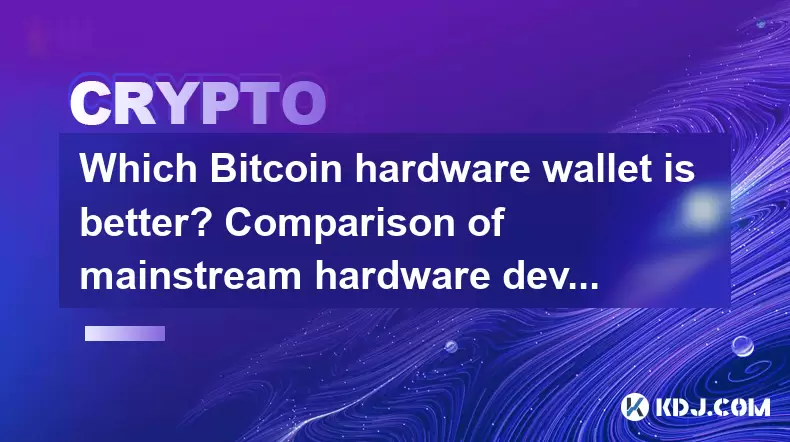
Which Bitcoin hardware wallet is better? Comparison of mainstream hardware devices
Jun 16,2025 at 02:08am
What Is a Bitcoin Hardware Wallet?A Bitcoin hardware wallet is a physical device designed to securely store the private keys associated with your cryptocurrency holdings. Unlike software wallets, which are more vulnerable to online threats, hardware wallets keep private keys offline, significantly reducing the risk of unauthorized access. These devices ...
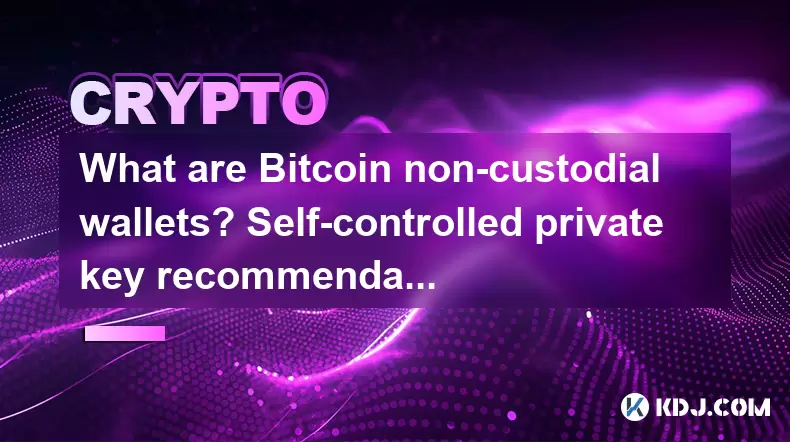
What are Bitcoin non-custodial wallets? Self-controlled private key recommendation
Jun 16,2025 at 11:29pm
Understanding Bitcoin Non-Custodial WalletsA Bitcoin non-custodial wallet is a type of digital wallet where users retain full control over their private keys. Unlike custodial wallets, which are managed by third-party services such as exchanges, non-custodial wallets ensure that only the user can access and manage their funds. This means no intermediary...

What is a Bitcoin Improvement Proposal (BIP)?
Jul 03,2025 at 11:28am
Understanding the Basics of Bitcoin Improvement Proposals (BIPs)A Bitcoin Improvement Proposal (BIP) is a formal document used to suggest changes, enhancements, or modifications to the Bitcoin protocol. These proposals serve as the primary mechanism through which developers and contributors communicate new ideas for improving the functionality, security...

How to earn interest on my Bitcoin?
Jul 03,2025 at 10:49am
Understanding Bitcoin Interest and Its MechanismsEarning interest on your Bitcoin involves leveraging financial tools or platforms that allow you to lend, stake, or deposit your BTC in exchange for regular returns. Unlike traditional banking where fiat currencies earn interest through savings accounts, Bitcoin’s decentralized nature requires alternative...

What is the Bitcoin stock-to-flow model?
Jul 03,2025 at 07:49am
Understanding the Bitcoin Stock-to-Flow ModelThe Bitcoin stock-to-flow (S2F) model is a valuation framework that attempts to predict the future price of Bitcoin based on its scarcity. This model, popularized by an anonymous analyst known as PlanB, uses the concept of scarcity from traditional commodities like gold and applies it to Bitcoin. The central ...

How to get a Bitcoin wallet?
Jul 03,2025 at 10:56am
What Is a Bitcoin Wallet and Why You Need OneA Bitcoin wallet is a digital tool that allows users to store, send, and receive Bitcoin (BTC). Unlike traditional wallets that hold physical currency, a Bitcoin wallet doesn’t actually store the cryptocurrency itself. Instead, it stores the private keys that grant access to your Bitcoin on the blockchain. Wi...

Which Bitcoin hardware wallet is better? Comparison of mainstream hardware devices
Jun 16,2025 at 02:08am
What Is a Bitcoin Hardware Wallet?A Bitcoin hardware wallet is a physical device designed to securely store the private keys associated with your cryptocurrency holdings. Unlike software wallets, which are more vulnerable to online threats, hardware wallets keep private keys offline, significantly reducing the risk of unauthorized access. These devices ...

What are Bitcoin non-custodial wallets? Self-controlled private key recommendation
Jun 16,2025 at 11:29pm
Understanding Bitcoin Non-Custodial WalletsA Bitcoin non-custodial wallet is a type of digital wallet where users retain full control over their private keys. Unlike custodial wallets, which are managed by third-party services such as exchanges, non-custodial wallets ensure that only the user can access and manage their funds. This means no intermediary...
See all articles

























































































